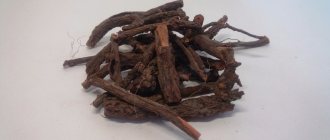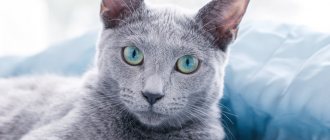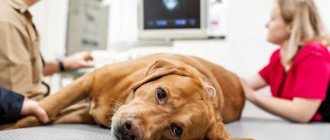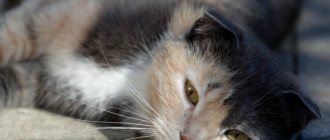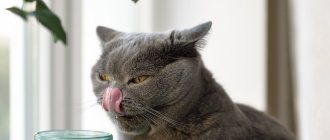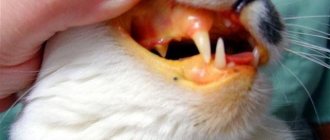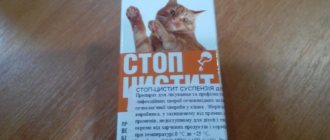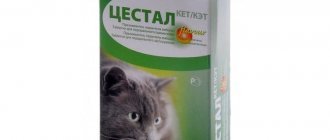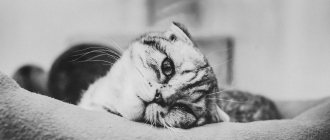The main function of the liver is protective. With the help of this important organ, the body neutralizes various foreign substances and removes excess breakdown products. If its operation is disrupted, not only neighboring systems, but also absolutely all systems are affected.
Because of this, advanced liver diseases in cats lead to very severe complications that are not always compatible with life. This outcome can only be avoided if alarming symptoms are detected in a timely manner.
What is considered hepatopathy in cats?
The concept of “hepatopathy” includes all liver diseases, ranging from ordinary inflammation to malignant degeneration of cells. The main danger of this group of pathologies is the prolonged absence of clinical signs, which is explained by the organ’s high ability to regenerate.
Hepatocytes, or liver cells, have a unique property. They are able to recover again and again, which has a positive effect on the prognosis of sick animals. In fact, only 75% of hepatocytes do the actual work. The remaining 25% provides a reserve function. They are put into action when the main cells are damaged.
The problem is that the downside of this feature is maintaining normal well-being until a late stage. Owners notice the disease in their pets only when more than 75% of hepatocytes are affected. At this point, reserve reserves are completely depleted.
The most obvious symptom is an enlargement of the cat's abdomen where the liver is located. But it can be easily confused with other diseases, so self-medication is prohibited.
basic information
Let us immediately note that such a disease does not exist in nature... Rather, this is the name for a complex of various liver diseases of various etiologies. Cases of hepatopathy include almost everything: from toxic dystrophy to cirrhosis.
What is the danger of all these pathologies? The liver is a unique organ. Only it has every chance of regeneration, even if no more than 20-30% of healthy tissue remains. But such resistance is not always good, since the first symptoms often begin to appear at the moment when there is nothing left of the liver, and the chances of saving the cat are close to zero.
What are the symptoms of hepatopathy in cats? The most characteristic clinical signs include exhaustion, apathy, and progressive emaciation. Very characteristic is the increasing yellowness of all visible mucous membranes and even the skin, problems with defecation. Sometimes the urine becomes like the juice of a freshly squeezed orange, and the cat, which gives such a wonderful liquid, is also distinguished by a constant, insatiable thirst. These signs are 100% likely to indicate severe liver damage.
Causes that negatively affect liver health
The main cause of liver failure in cats is poor quality nutrition. The thing is that cat hepatocytes do not neutralize all toxins that come with food. Because of this, mustachioed pets often suffer from food poisoning. They are provoked by cheap food, spoiled and prohibited foods that are not suitable for feeding cats.
A balanced diet also plays a significant role. The functionality of the organ is impaired by excess and deficiency of vitamins, as well as by anorexia and excess weight. No less dangerous is a sudden transition to a new type of food.
Other triggers not related to feeding include:
- parasitic infestations;
- intoxication with poisons, chemicals and medications;
- infectious diseases of various etiologies;
- malignant neoplasms;
- prolonged stress;
- kidney and cardiovascular diseases, as well as diabetes and pancreatitis.
Those at risk include older cats, animals with weakened immune systems, and Siamese-Oriental breeds. Such pets need to be periodically examined so as not to miss the development of the disease and begin its treatment at an early stage.
What causes liver damage?
Firstly, low-quality (mold) or simply unsuitable food for cats (smoked meats, for example) plays a huge role. In addition, a huge amount of toxins can come from the intestines if it is completely clogged with helminths. Secondly, the liver is very sensitive to many factors of an infectious nature (viruses, bacteria). Any problems with blood circulation (heart failure), as well as diseases of the adrenal glands, accompanied by critical changes in the body’s hormonal levels, are extremely dangerous for this organ.
Signs of liver disease in cats
The first alarming symptoms of liver disease in a cat are invisible, so owners do not think about treatment. They associate the malaise with a mild cold or fatigue due to heat, estrus and other non-hazardous factors.
Apathetic behavior, lethargy and poor appetite are easily confused with harbingers of other diseases. They also do not cause problems with the gastrointestinal tract: nausea, vomiting and diarrhea. But over time, signs of liver disease in cats are supplemented by more alarming changes:
- increased thirst and frequent urination;
- deterioration of wool quality, the appearance of itching and dandruff;
- excessive salivation, unnatural pallor or yellowness of the mucous membranes;
- darkening of urine to a brown tint and change in color of feces to light gray or black.
Other signs depend on the cause of the pathology. Depending on the diagnosis, the animal may suffer from liver pain, muscle atrophy, subcutaneous hemorrhages, ascites, bleeding disorders and enlargement of the affected organ.
Treatment: drugs, diet, prognosis
A liver biopsy will help make a diagnosis by determining the condition of the organ. Only after diagnosis will veterinary medicine give a prognosis for recovery. In case of poisoning or infectious damage to the liver, it is necessary to put your pet on a diet, excluding fatty foods. On the first day, the cat will be hungry; in subsequent days, porridge will be introduced into the diet, then meat.
If a cat has a diseased liver, the veterinarian will prescribe the medicine “Enterosgel”, vitamins B, C. To restore the liver, there is a regimen for taking “Liv 52”. To reduce pain, antispasmodic medications, antibiotics and droppers are prescribed to help the fluffy survive if dehydrated. Also diuretic and choleretic drugs for cirrhosis. If you follow medical recommendations, liver disease in cats can be cured, and the prognosis for the life of the mustache is in most cases favorable. In case of cancer and urolithiasis, when the liver fails, surgical intervention is indispensable. The prognosis will depend on the effectiveness of the operation, the degree of damage to the organ and the general condition of the pet.
Liver pathologies common in cats
According to the nature of the course, all hepatopathies are divided into acute and chronic, and according to the reason for their occurrence - into primary and secondary. In most cases, sick animals are given a positive prognosis, so they are treated at home.
Hepatitis in different forms
Hepatitis is more common than other pathologies and is accompanied by gradual breakdown of the liver. Its main symptom is yellowing of the mucous membranes and skin. Other symptoms depend on the type and form of the pathology.
Depending on the cause, hepatitis can be infectious or toxic. In the first case, there is increased thirst, repeated vomiting, diarrhea or constipation, and in the second - severe weakness, slow pulse and loss of interest not only in food, but also in water.
The chronic form is the most difficult to treat. It is often complicated by cholangitis and lipidosis.
Hepatosis, liver failure
Hepatoses include diseases accompanied by metabolic disorders in hepatocytes and their degenerative changes. In animals, the fatty type is most often diagnosed, which occurs against the background of excess intake and accumulation of fat.
A complication of hepatosis is often liver failure, characterized by partial or complete loss of functionality of the affected organ. The clinical manifestations of this pathology are similar to hepatitis, but it lasts much longer in a latent form. Because of this, the prognosis for this diagnosis is quite ambiguous.
Cirrhosis
Accompanied by the proliferation of connective tissue, changing the structure of healthy cells. The main symptoms of cirrhosis include:
- jaundice;
- breathing and heart rhythm disturbances;
- prolonged diarrhea;
- bloating and significant enlargement of the organ, felt when palpating the abdomen on the right side in the area of the diaphragm;
- small hemorrhages on the iris or cornea.
The disease is incurable, so only symptomatic therapy is used to alleviate the condition. It helps extend the life of the animal by about 1 year.
Oncology
Most often, the tumor grows in the bile ducts or penetrates from neighboring organs through metastases. Feline cancer is accompanied by poor appetite, severe weakness and thirst. The patient vomits profusely, and blood appears in his stool.
The prognosis for oncology depends on the time of detection of the tumor. At an early stage, the regenerative function allows you to remove up to 70% of tissue without much harm to the body. If metastases were detected at the time of diagnosis, then the chances of recovery rapidly decrease.
Cholangitis of various origins
Cholangitis, or inflammation of the bile ducts, often develops against the background of toxoplasmosis and infections. It is characterized by an acute pain syndrome, noticeable to the owner during normal stroking. No less excruciating pain is observed when urinating, so a sick cat may walk past the litter box.
Based on their origin, the pathology is divided into 2 types:
- neutrophilic, developing in the presence of infection;
- lymphocytic, presumably due to autoimmune disorders.
The second type is characterized not only by inflammation, but also by excessive accumulation of fluid in the abdominal cavity. When the animal is lifted up by its front legs, its belly takes on a characteristic pear-shaped shape.
Lipidosis
Overweight pets suffer from lipidosis. Fatty deposits accumulating in their hepatocytes cause extensive swelling and gradual destruction of surrounding tissues. Over time, the organ completely loses its functionality.
The main symptom is a complete refusal to eat, lasting more than 3 days in a row. The prognosis for lipidosis is very cautious, since during the rehabilitation period a relapse can be triggered by any negative factor.
Cholelithiasis and cholecystitis
The problem may arise due to blockage of the bile ducts with large stones. This type of pathology is called cholelithiasis, or cholelithiasis. It is accompanied by jaundice and severe colic in the right side.
Without timely treatment, cholelithiasis is complicated by cholecystitis - inflammation of the gallbladder. This pathology intensifies existing pain and negatively affects the functioning of the gastrointestinal tract. In addition to loss of appetite, a sick animal experiences a stable alternation of diarrhea and constipation.
An acute form of inflammation can result in rupture of the gallbladder. This complication can be recognized by a sharp pallor of the mucous membranes, frequent shallow breathing and a drop in temperature below normal. After these symptoms appear, the pet must be taken to a veterinary clinic as soon as possible, otherwise it will simply die.
Helminth infection
Liver parasites poison the body with the products of their vital activity, appropriate some of the useful substances and injure the tissues of the captured organ. Pathogenic microorganisms easily penetrate into emerging wounds, so helminthiasis is often complicated by a secondary infection.
Infection with helminths can be recognized by yellowing of the skin and mucous membranes, as well as acute pain in the abdominal area. When the infestation is advanced, some of the parasites are excreted along with the feces.
Some helminths are transmitted to humans, so with late treatment, not only other four-legged animals, but also their owners can become infected. The drugs used in anthelmintic therapy are quite toxic. Because of this, sick kittens are given a very cautious prognosis.
Cholelithiasis
Insoluble stones form in the bile ducts and ducts. Gallstone disease is typical for older cats and male cats that have been sterilized.
The disease causes severe pain in the liver area, the cat has a fever, diarrhea, vomits, and the feces acquire a very unpleasant odor. All symptoms appear, unfortunately, when the pet’s condition begins to deteriorate.
The disease is associated with the following reasons:
Cholecystitis is an inflammatory process in the gallbladder. It has two forms: It can be acute and chronic. With acute cholecystitis, a domestic cat begins to lose weight and appetite, often vomiting, fever, and weakness. The chronic course is characterized by the fact that the disease is detected, as a rule, only during examination. The acute form becomes chronic in the absence or improper treatment. The chronic stage gives a picture of indigestion, often diarrhea gives way to constipation, and it is clear that the animal vomits after eating.
The causes of the disease include:
- gastrointestinal diseases, especially with reduced stomach function;
- poor nutrition;
- liver damage.
Diagnosis and treatment of liver diseases in cats
If you notice at least one of the listed symptoms, you should contact your veterinarian. To make a diagnosis, your pet will have to undergo an ultrasound, biopsy and x-ray, as well as blood and urine tests.
Any delay in examination is fraught with hepatic coma and subsequent death, so never self-medicate without being sure of the cause of your pet’s illness. Even if the symptoms of liver disease are similar in cats, treatment may vary greatly.
The therapy used focuses on taking hepatoprotectors - special drugs that promote the restoration of damaged hepatocytes and prevent their further destruction. No less important is the transition to a diet that includes moderate consumption of fats and proteins. All other recommendations regarding symptomatic therapy depend on the established diagnosis:
- Hepatitis
. Involves the use of antibiotics, antispasmodics, antihistamines and glucocorticosteroids. If severe dehydration occurs, the pet is temporarily placed in a hospital for IV drips.
- Hepatosis and liver failure
. In the chronic form of the disease, emergency plasma transfusion and detoxification therapy are often used. If the sick person categorically refuses to eat due to severe pain, then he is forcibly fed using a tube.
- Cirrhosis
. Degenerated cells cannot be restored, so when choosing drugs, they are based on the existing symptoms.
- Oncology
. If detected in a timely manner, the tumor is excised, which allows complete tissue regeneration. In the case of metastases, the prognosis is disappointing. Therapy is based on chemotherapy, which slows down the growth of the tumor or reduces its size.
- Cholangitis
. It all depends on the reason. For infectious diseases, antibiotics and choleretic drugs are used, and for autoimmune disorders, immunomodulators are used.
- Lipidosis
. With this disease, as with hepatosis, all nutrients are administered through a tube. The mustachioed patient is released for home treatment only after his condition has stabilized. Intravenous and subcutaneous administration of drugs that stabilize water and electrolyte balance is also recommended.
- Cholelithiasis and cholecystitis
. The main method of treatment is surgery. Stones that clog the ducts are removed under general anesthesia.
- Helminthiasis
. You can get rid of worms by taking anthelmintics twice a day. Surgery is resorted to only in emergency cases, when there are too many parasites.
Despite the importance of drug treatment, special attention is paid to feeding regimen and dietary revision. The new menu reduces the load on the gastrointestinal tract, promoting faster healing of affected tissues.
Prevention of liver diseases
The main prevention of liver disease in pets is proper balanced nutrition. The digestive system of a cat is structured completely differently than that of a human, so you can’t feed your pet from the owners’ table, you don’t need to pamper the cat with fatty meat or smoked sausage, this can cause significant harm to its health.
If the owner prefers dry food for his pet, then you need to choose it exclusively from a premium class, and be sure to follow the feeding standards in grams for each specific breed and weight of a particular animal.
When feeding your four-legged friend natural food, you need to work with your veterinarian to create a rational menu that will include the products the cat needs.
You can feed your cat lean meat, but be sure to add fiber and carbohydrates approved by your veterinarian. Vegetables, fruits, and fresh herbs should only be added in consultation with a doctor, so that there are no problems with the cat’s stomach. With a natural diet, the cat should receive special vitamins.
You need to remember to vaccinate your pet. Vaccinations will help prevent many diseases that are dangerous for cats.
The cat should not come into contact with household chemicals to avoid allergies and poisoning by chemicals.
If there is poison or poison in the house (for example, from rodents), they should be stored where the cat does not have access. In this way, toxic poisoning will be prevented.
Missing the required deworming deadlines is not allowed. With helminthic infestation, as is known, quite serious intoxication occurs.
You should always keep your cat in normal conditions, in a warm room, to avoid colds.
Principles of feeding and diet for hepatopathy
Dietary nutrition for hepatopathy is selected individually - based on the patient’s tests. Despite this, some rules are the same for everyone:
- Too fatty foods and fast carbohydrates must be removed from the diet.
- The number of feedings is increased, and the usual portions, on the contrary, are reduced. This allows you to relieve the gastrointestinal tract and avoid prolonged fasting.
- All food is served in grated or ground form, and when heating it, it is oriented at room temperature.
To improve immunity, it is recommended that the animal take a course of vitamins and minerals that are lacking in the body. When feeding naturally, the list of permitted products includes:
- rice and oatmeal porridges or decoctions;
- boiled sea fish and lean meat, as well as light broths based on them;
- fermented milk products with a low fat content;
- boiled, steamed or baked vegetables.
For animals eating dry food, a transition to veterinary lines intended for the treatment of gastrointestinal diseases is provided. They are produced by Royal Canin, Purina Pro Plan, Hill's and other well-known manufacturers.
Cat esophagus.
Cat esophagus
is a small hose-like tube that connects the mouth to the stomach. Starting from the mouth, the esophagus passes through the neck and chest, near the heart, through the muscles of the diaphragm and ends at the entrance to the stomach. The walls of the esophagus contain muscles that, making wave-like contractions, push food into the stomach. When there is no food in the esophagus, the walls press against each other, closing the esophagus. Surgeries on the esophagus are usually difficult because it is located in the chest and heals very slowly.
Large intestine of a cat.
Cat's large intestine
connects the small intestine and anus. The large intestine is larger in diameter than the small intestine. Its main function is to absorb water from the stool as needed to maintain a constant level of fluid in the body. Another function of the large intestine is to temporarily store feces until it is eliminated from the cat's body.
The large intestine consists of several parts. Cecum
continues the small intestine.
Its true purpose is unknown. The colon
is the longest part of the large intestine and ends just inside the anus.
The final part of the large intestine is called the rectum
.
Cat's stomach.
Cat stomach
adapted to preserve large volumes of food and a long digestion process. Food enters the stomach through the esophagus through a valve-like organ called the cardiac sphincter. There are a number of folds on the inner surface of the stomach. The function of the gastric folds is to help grind and digest food. The inner surface of the stomach secretes acid and enzymes that break down food. When pre-processing is complete, the partially digested food leaves the stomach through the pyloric sphincter and then enters the duodenum (the first segment of the small intestine). Food eaten generally leaves the stomach within twelve hours of consumption.

